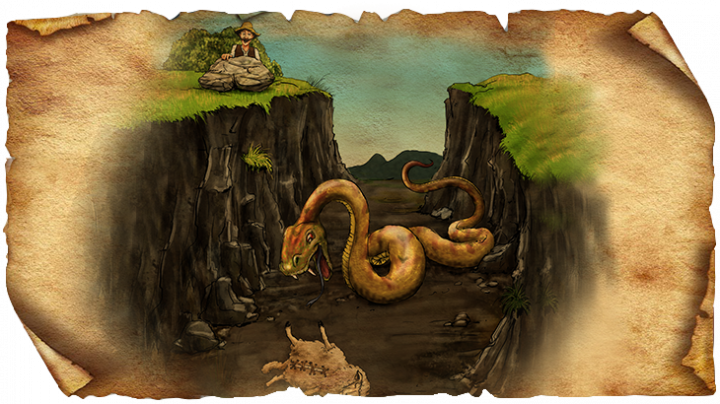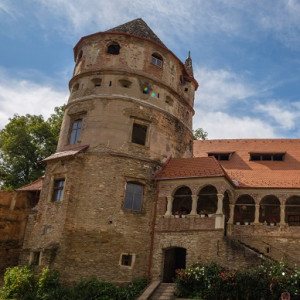The Legacy of the Bethlens - Criș


The history of the small settlement belonging to the municipality of Dános, southwest of Sighisoara, is combined with the history of the Bethlens, one of the largest and oldest aristocratic families in Transylvania. According to one of the legends, a dangerous cockatrice nested in Keresd, in the cove of the Wendchenberg mountain, claiming every week a bigger animal or a man as a victim. But the Bethlens settled in Keresd, built a castle, and helped the poor many times, especially during the famine in winter.
They also put an end to the horror of the cockatrice: the ancestor of the Bethlens was actually a carman who defeated the cockatrice with a trick, and was rewarded with a castle that had originally belonged to the Teleki family. The carman skinned a sheep, and stuffed its fur with the unslaked lime from the nearby lime pit and then sewed it. He threw it to the dragon that eagerly swallowed up the bait, but the lime came to the boil in it and destroyed it. That's why you see a snake in the coat of arms of Bethlenek.
In Keresd, this small settlement inhabited by the Saxons in former times, live today Romanian and Gypsy people. Most of the Saxons have emigrated - the Bethlen Castle, which is the most important attraction of the area, still stands in the village of a few hundred people. You need to get off the main road between Medgyes and Segesvár, although the road to the village is in bad shape, the castle's sight, the experience, the time travel compensates the visitor for everything.
The Renaissance castle was built in two stages: between 1580-1590, and in the 17th century, when it was flourishing. It was an important fortress also from a military point of view, as bastions were built to it. The castle was built on a rectangular foundation, today having only two of its original four bastions with battlements and reliefs decorations.
As the front was approaching in 1944, the Bethlens left the castle, which was nationalized, and it deteriorated during communism. The descendants of the Bethlens were given back the castle in 2007, and in 2014, it was granted for use to the Saint Francis Foundation in Deva led by Csaba Böjte, for fifty years, - so the fortress is restored by the foundation, as a cultural, training and tourist center. In the garden of the castle and in its surroundings, tourists should walk cautiously, as the little descendants of the cockatrice in the Bethlens’ coat of arms can still scare them.
They also put an end to the horror of the cockatrice: the ancestor of the Bethlens was actually a carman who defeated the cockatrice with a trick, and was rewarded with a castle that had originally belonged to the Teleki family. The carman skinned a sheep, and stuffed its fur with the unslaked lime from the nearby lime pit and then sewed it. He threw it to the dragon that eagerly swallowed up the bait, but the lime came to the boil in it and destroyed it. That's why you see a snake in the coat of arms of Bethlenek.
In Keresd, this small settlement inhabited by the Saxons in former times, live today Romanian and Gypsy people. Most of the Saxons have emigrated - the Bethlen Castle, which is the most important attraction of the area, still stands in the village of a few hundred people. You need to get off the main road between Medgyes and Segesvár, although the road to the village is in bad shape, the castle's sight, the experience, the time travel compensates the visitor for everything.
The Renaissance castle was built in two stages: between 1580-1590, and in the 17th century, when it was flourishing. It was an important fortress also from a military point of view, as bastions were built to it. The castle was built on a rectangular foundation, today having only two of its original four bastions with battlements and reliefs decorations.
As the front was approaching in 1944, the Bethlens left the castle, which was nationalized, and it deteriorated during communism. The descendants of the Bethlens were given back the castle in 2007, and in 2014, it was granted for use to the Saint Francis Foundation in Deva led by Csaba Böjte, for fifty years, - so the fortress is restored by the foundation, as a cultural, training and tourist center. In the garden of the castle and in its surroundings, tourists should walk cautiously, as the little descendants of the cockatrice in the Bethlens’ coat of arms can still scare them.
